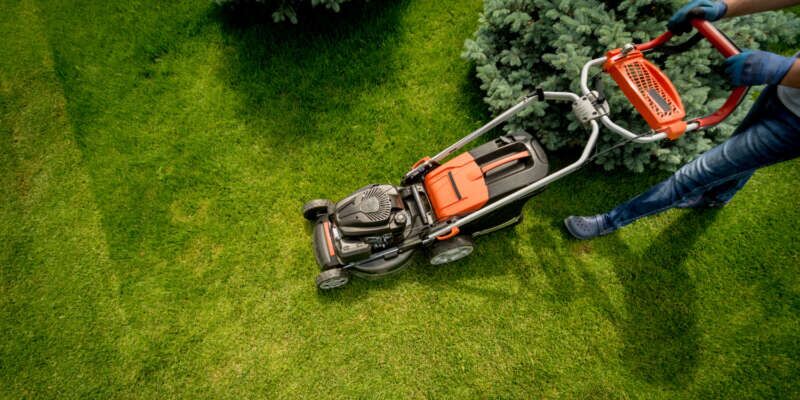Weed and Feed for Lawns, Weed and Feed: Effective Lawn Care Solutions

Weed and feed products combine fertilizing and weed control in one application, making lawn care more efficient. They help nourish grass while simultaneously targeting common broadleaf weeds like dandelions and clover, saving time and effort for homeowners.
Using the right weed and feed at the right time can improve lawn health and reduce weed problems over the growing season. However, these products are not suitable for newly seeded lawns and should only be applied to established turf, typically older than six months.
Understanding the types of weed and feed available and how to use them properly is essential for maintaining a lush and healthy lawn. This guide will cover key aspects of choosing and applying weed and feed to meet different lawn care needs.
Choosing the Right Weed and Feed for Lawns
Selecting a Weed and Feed for Lawns product involves understanding the formulation types, the specific needs of your lawn, and how to interpret product labels correctly. Each factor affects effectiveness and safety, ensuring the lawn receives appropriate nutrients while controlling the right weed species.
Types of Weed and Feed Products
Weed and feed products vary by formula and method of application. The two main types are granular and liquid.
- Granular products are spread evenly over the lawn and release nutrients slowly. They are preferred for general use and offer longer-lasting effects.
- Liquid formulations are sprayed and provide quicker nutrient uptake and weed control but may require more precise application.
Products differ based on active ingredients targeting specific weeds like broadleaf weeds or grassy weeds. Some formulas also cater to specific grass types, such as Kentucky bluegrass or Bermuda grass.
Choosing a product that matches your lawn’s grass and weed types maximizes results and reduces harm to desirable plants.
Factors to Consider Before Purchasing
Consider your lawn's grass type, weed problems, and regional climate before choosing a weed and feed product.
Key considerations include:
- Grass species compatibility: Some products can damage certain grasses.
- Weed types targeted: Identify if you need control for broadleaf weeds, crabgrass, or both.
- Application timing: Some products work best in spring, others in fall.
- Environmental impact: Look for options with lower chemical runoff risk if near water or sensitive plants.
Buying a product without matching these factors can reduce effectiveness or damage the lawn.
Reading Product Labels and Instructions
Labels provide crucial information on ingredients, application rates, timing, and safety precautions.
Always check for:
- Active ingredients: Know the herbicides and fertilizers used to ensure suitability.
- Application method and amount: Follow recommended amounts to avoid lawn burn or ineffective treatment.
- Weather recommendations: Some products require dry conditions or specific temperatures for best results.
- Safety measures: Protective gear and re-entry times after treatment protect users and pets.
Reading and following instructions precisely helps maximize benefits and minimizes risks to the lawn and environment.
Application and Best Practices
Applying weed and feed requires attention to timing, precise spreading, and proper watering. Avoiding common mistakes can prevent damage to the lawn and improve overall effectiveness. Clear steps and conditions help ensure the best results.
Correct Application Timing
Weed and feed should be applied during active weed growth when the grass is actively growing. The ideal temperature range is between 60°F and 90°F (15°C to 32°C). Applying in early spring or fall aligns with these conditions, depending on grass type and local climate.
The lawn should be damp but not wet before application to help absorption. Avoid applying during drought, extreme heat, or heavy rain periods. Mowing the lawn 2-3 days before application exposes the weeds and improves herbicide uptake without stressing the grass.
Proper Spread and Watering Techniques
Use a broadcast or drop spreader for even distribution to avoid streaks or uneven coverage. Follow the product label for the exact application rate to prevent overfeeding or burning the lawn.
After spreading, watering lightly helps activate the herbicide and fertilizer. However, avoid overwatering, which can wash away the chemicals or reduce product effectiveness. Watering immediately after application or waiting until the following day depends on product instructions.
Common Mistakes to Avoid
Applying weed and feed during drought or extreme heat can harm grass. Over-application can burn the lawn and cause nutrient imbalances. Always adhere to label rates and avoid multiple treatments in a short time.
Mowing too close or immediately before application weakens grass and reduces herbicide absorption. Applying before or during heavy rain can wash away the product, rendering it ineffective. Ignoring grass type and seasonality risks poor results or damage.
- Art
- Causes
- Crafts
- Dance
- Drinks
- Film
- Fitness
- Food
- Oyunlar
- Gardening
- Health
- Home
- Literature
- Music
- Networking
- Other
- Party
- Religion
- Shopping
- Sports
- Theater
- Wellness


